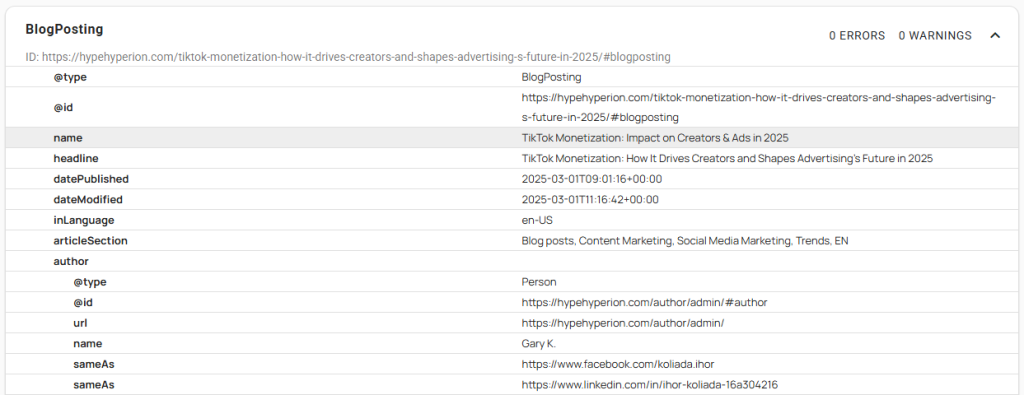Keyword Usage Matters 🧠
Strategic keyword insertion remains one of the strongest tools for bloggers aiming to increase organic traffic. For personal brand sites, the difference between casual mentions and purposeful SEO-driven usage can be immense. Each blog post should include the main target phrase at least once per 1000 characters, accompanied by two word-form variations of the same key term. For instance, if your main keyword is personal brand SEO, you should also incorporate terms like SEO for personal branding or search engine optimization for personal brands, highlighting them with the <strong> tag. This practice improves both relevance and visibility for search engines without risking over-optimization.
Internal Linking Builds Authority 🔗
Internal linking (also known as interlinking) boosts SEO by guiding users deeper into your content and distributing page authority across your site. For personal brand blogs, it’s crucial to create a logical structure of links pointing to your cornerstone content. Link older articles to newer ones and vice versa where relevant, maintaining thematic consistency. This not only helps with crawlability but also improves user engagement. Always ensure anchor texts reflect the content being linked and avoid vague CTAs like “click here.”


External Links: Add Value and Credibility 🌐
External linking adds depth to your blog posts when you cite credible, authoritative sources. But to prevent leaking link juice, external links—especially those not pointing to partners or affiliates—should include the rel="nofollow" attribute. This is essential for maintaining your site’s authority while still benefiting from trust signals Google values. Also, the presence of outbound links to reputable domains helps your content signal expertise and trustworthiness, part of Google’s E-E-A-T criteria.
Readability: Write for People, Not Just Bots 🪶
Your content should read naturally and fluently. Good readability encourages visitors to stay longer on the page, which is a positive behavioral signal to search engines. Use short paragraphs, conversational language, and active voice. Break long explanations with bolded subpoints and keep technical jargon to a minimum unless you’re targeting a highly specific audience. Also, consider using tools like Hemingway or Grammarly to keep your tone reader-friendly.
Unique Content Is Non-Negotiable 🎯
In 2025, originality isn’t just a preference—it’s a requirement. AI-generated content floods the internet, making unique content the defining factor in your SEO strategy. Personal brand blogs should rely on first-hand experiences, client case studies, and unique perspectives to stand out. Rewriting existing posts or using spun content could result in lower rankings or even penalties. Instead, position your brand voice as authentic and authoritative, offering value no one else can.
Schema Markup and Microdata 🧩
To boost visibility in SERPs, integrate schema markup into every blog post. Add Article, Author, and BreadcrumbList schema types to enhance appearance in rich results. This small but impactful action helps Google understand your content’s context. Tools like Google’s Rich Results Test can validate your markup. Blogs that use structured data not only appear more trustworthy but often benefit from higher CTRs.

Show the Author Behind the Words 🧍♂️
Google values content written by real authors. Enable author functionality in your CMS and ensure every article is attributed to a verifiable person. Include a short bio, headshot, and links to social profiles or related publications. This transparency fosters trust and supports the E-E-A-T guidelines (Experience, Expertise, Authoritativeness, and Trustworthiness). If you run a team blog, rotate contributions and link back to each contributor’s bio or author archive.
source: Base Claims

Be the Expert You Are 📚
Google’s evolving algorithm favors blogs that exude expertise. Personal brand websites must position their authors as thought leaders. This includes referencing real projects, offering actionable insights, and citing verifiable stats or data. Articles without fluff or filler—focused on deep, niche-specific knowledge—rank higher and generate better engagement. When your blog becomes a trusted destination for answers, your entire brand benefits.
Formatting: A Structure Search Engines Love 📐
Proper formatting makes your content scannable for users and understandable for search engines. Use clear H2 and H3 tags to segment your blog into digestible parts. Avoid walls of text and emphasize clarity through proper spacing, bolding, and italics where necessary. Subheadings not only help with user retention but also enable search engines to grasp your content hierarchy. Don’t forget to use alt text on all images for accessibility and SEO.
Example:
Emojis and SEO: A Delicate Balance 😊
Surprisingly, emojis can boost engagement when used sparingly and intentionally. They help structure content visually and add emotional cues that keep readers engaged. For personal brands, adding emojis to headlines or callouts can make posts feel more human and less corporate. However, overuse can hurt readability and appear unprofessional. Stick to 1–2 emojis per section and test their impact on bounce rate and dwell time via analytics.
Why These Habits Work Together 🚀
When combined, these blogging habits create a content ecosystem that performs on every SEO front—technical, creative, and authoritative. They don’t just bring organic traffic; they build a reputation. For personal brands, each blog post is a long-term asset. With consistent structure, expert tone, and intelligent optimization, your blog can evolve into a lead-generating machine that solidifies your position as an industry voice.


